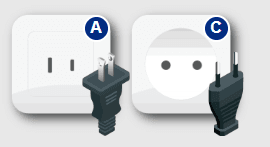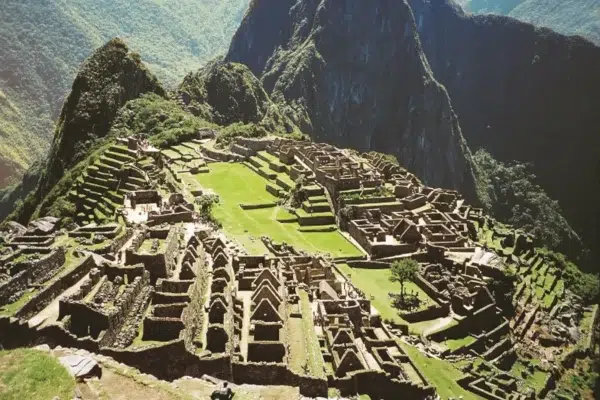Responsible Travel as a tour operator invites you to consider the following guidelines in order to ensure a satisfying experience during your trip to Peru. However, please note that any requirement may change without prior notice, and it is the responsibility of each traveler to ensure compliance with the current entry requirements.
Entry and Exit Requirements
- Passport: It must be valid for at least six months from the date of entry.
- Andean Migration Card (TAM): This document is completed upon arrival and it is important to keep it for hotel check-in and departure from the country.
- Visa: Citizens of many countries such as the U.S., Canada, and the European Union do not need a visa for tourist stays of up to 90 days. It is important to check the specific requirements based on your nationality before traveling.
- Keep the TAM (departure): Make sure to keep the Andean Migration Card, as you will need to present it at the airport when leaving the country.
If you are a foreign national intending to visit Peru for recreational or similar purposes and, based on your country of origin, require a tourist visa, you can apply for it at the Peruvian consular offices in the country where you are located. This process must be completed 15 days prior to your trip.
List of Countries That Require a Visa to Enter Peru
| Angola | Afghanistan | Bangladés |
| Cameroon | Corea del Norte | Ghana |
| India | Nigeria | Republic of the Congo |
| Senegal | Somalia | Palestina |
| Pakistan | Syria | Yemen |
| Cuba | Haiti | Kosovo |
| Iran | Irak |
Language
Spanish is the official language, but in specific areas such as Cusco and the Amazon, indigenous languages like Quechua and Aymara are also used. However, in tourist areas, English is commonly spoken by guides and staff at hotels and lodges.
Time Zone
Peru operates under Peru Standard Time (PET), which is 5 hours behind UTC (-5) and does not observe daylight saving time.
Currency
The official currency of Peru is the Peruvian sol (PEN). It is easy to exchange U.S. dollars and euros at exchange houses, banks, and airports. Additionally, credit cards are accepted in urban and tourist areas, but it is always advisable to carry cash for expenses in markets and rural areas.
Connectivity
Regarding connectivity, Wi-Fi is free in hotels, airports, and some cafes; however, keep in mind that it may be limited in rural areas. Operators such as Claro, Movistar, and Entel offer prepaid SIM cards with mobile data for tourists. Note that cellular signal can be limited in mountainous regions and parts of the Amazon.
Plugs and Adapters
The voltage used in Peru is 220V at a frequency of 60Hz, and the plugs you will find there are Type A and Type C.

Travelers from countries such as the U.S. will need an adapter for their devices, especially if they use Type B plugs.
Health and Safety
Vaccinations
- Yellow Fever: It is recommended for those planning to visit the Peruvian Amazon (regions such as Loreto, Ucayali, and Madre de Dios).
- Hepatitis A and B: To prevent infections caused by contaminated food or water and contact with blood or bodily fluids.
- Tetanus and Diphtheria: Ideal for any traveler, especially those planning to engage in outdoor activities.
- Rabies: It is advisable for those visiting rural areas or engaging in activities involving animals.
Insect-Borne Diseases
- Dengue, Malaria, and Chikungunya: These illnesses may occur in low-altitude regions and the Amazon. Use DEET-based repellent and wear long-sleeved clothing.
- Leishmaniasis: It is also found in Amazon regions; insect bites should be prevented and preventive measures should be followed.
- Drinking water: It is advisable to avoid drinking tap water. Prefer bottled, boiled, or treated water, and ensure that food has been properly prepared.
UV Rays and Altitude
- UV Rays: In high-altitude places such as Cusco or Lake Titicaca, solar radiation is stronger. It is recommended to use high-SPF sunscreen, sunglasses with UV protection, and hats.
- Altitude Sickness: It is common in regions above 2,500 meters above sea level, such as Machu Picchu or Huaraz. Symptoms include headaches, nausea, and fatigue. To prevent it, it is advisable to rest upon reaching high-altitude locations and drink coca tea (a traditional remedy for the symptoms).
Healthcare System
Medical centers and private clinics in major cities such as Lima and Cusco provide high-quality care. However, infrastructure in rural areas may be limited. It is essential to have travel insurance that covers medical emergencies. Pharmacies are common in both urban and rural areas; however, some medications may require a prescription.
Safety
- Zonas turísticas: Generalmente son seguras, pero siempre estén atentos con sus pertenencias, particularmente en mercados, estaciones de transporte y zonas de gran afluencia de personas.
- Transport: Choose registered taxis, apps like Uber, or trusted services. In large cities, avoid using street taxis.
Números de emergencia
- National Police: 105
- Ambulance Emergencies: 106
- Fire Department: 116
- Tourist Assistance: +51 1 574 8000.








